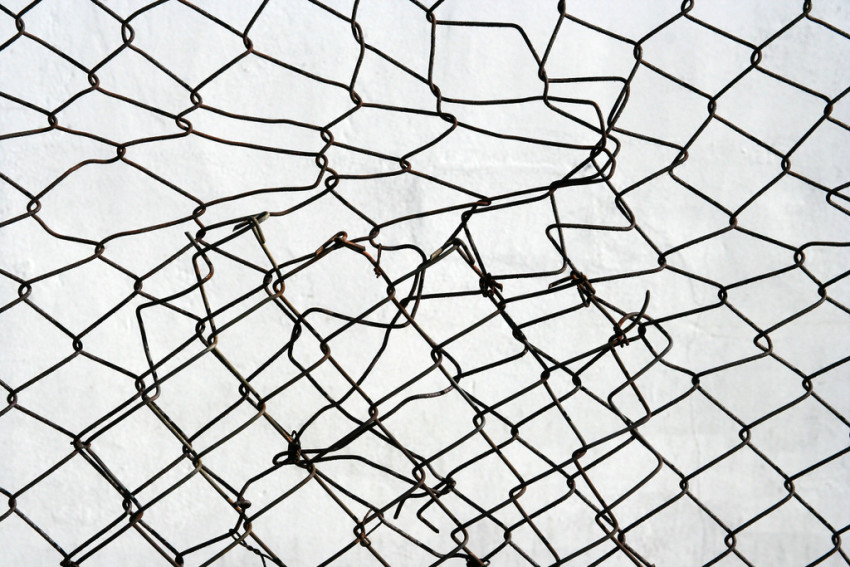Before the establishment of the modern state, characterised by its clear delineation of territorial boundaries, Immanuel Kant penned his essay Perpetual Peace. Among his conditions for what would secure a truly lasting peace was the Third Definitive Article – what he called the “cosmopolitan right,” which he defined as “the right of a stranger not to be treated with hostility when he arrives on someone else’s territory.”[1] This right, reasoned the philosopher, followed simply by virtue of humanity’s “common possession of the earth, where, as a globe, they cannot infinitely disperse and hence must necessarily tolerate the presence of each other.”[2]
In the 21st century, when there are currently an estimated 45.2 million refugees, [3] Kant’s idea of cosmopolitanism not as an act of philanthropy bestowed by the generous, but as a right we have simply by virtue of being human cannot but appear at once radical and deeply intuitive.
The boundaries of the world are riddled with contradictions. While borders are made porous to the circulation of capital by treaties like the Trans-Pacific Partnership, they are at the same time brutally enforced when it comes to the world’s most vulnerable – people denied their basic rights and dignity as human beings who then are made the vessel of the West’s deep anxieties and animosities.
It is here that Demos, as a journal based in Australia, feels a particular responsibility. Australia’s detention centres – or concentration camps, if we are to call them as they will be remembered – have been decried across the world for the unconscionable conditions under which people who have committed no crime are indefinitely imprisoned. These centres exist at the edges of legality. Indeed, at the same time as insisting that Papua New Guinea has the legal responsible for the fate of detainees on Manus Island, the Turnbull government refused to allow a transfer of refugees from PNG to New Zealand. The violence perpetrated against refugees in the name of Australia’s security is the starting point for many of the pieces – critical and creative – in this edition.
To begin with, in an interview with Demos Editor Odette Shenfield, Refugee Law Scholar Dr Matthew Zagor discusses his new research on refugees and borders. He describes the way in which the contemporary refugee becomes so embedded in the concept of borders that they come to embody the border. Refugees, he explains, who arrived by boat at the Australian border in 2001 arrived at an excised area. They consequently took this ‘excised status’ with them wherever they went, even if inside the mainland. As he puts it, “they’ve almost incorporated the border into themselves.”
Zagor unpacks a number of fascinating ideas relating to the relevance of theological concepts to our understanding of borders and refugee law. Drawing on anthropologist Mary Douglas, he discusses the way in which those who cross boundaries, such as refugees, become ‘liminal,’ and as a consequence are depicted as dangerous and impure.
Many of the pieces in this edition probe the ways in which physical borders reflect deeper boundaries within our national psyches, cultures, narratives, and discourses. For instance, Demos Subeditor Esther Carlin explores the role cultural mixing can play in challenging borders constructed to exclude. Choosing two fascinating case studies – Mexican sonideros (musicians), on the border between Mexico and the US, and young first generation French in the Parisian banlieues – she explores their use of music and language to shape identity, and contest exclusionary borders of belonging. She writes of the sonideros: “Situated in a precarious in-between world, they have used music as a mixed cultural practise that informs and responds to their unique migrant subjectivity.”
Sumithri Venketasubramanian muses on the dichotomy present within her own understanding of culture: whereby she both desires to feel ‘Indian enough’, whilst rejecting the problematic aspects of the Hindu culture. As she notes, white, western feminism holds the privilege of being able to “throw away whatever it wants whenever it wants to.” That is, past traditions that fit poorly with present ones can be easily discarded, without posing any threat to the prevalence of Western culture. However, when your culture is not the ‘default’, creating a nuanced understanding of both past and present, without a compromising feminism, can be much more complex. For Venketasubramanian, a fragmented, and contradictory understanding of the past may well be better than none at all.
And Rodney Kelly’s correspondence with the British Museum reveals the ongoing determination of Indigenous Australians to claim their heritage, as well as the boundaries they face in achieving justice.
There are many more pieces we are unable to discuss here at length that make us especially proud and excited to launch this coming edition – essays from Hannah Sangren, Matt Rodgers, Siobhan Neyland, Charlotte Goodman, Rosalind Moran, Phyllida Behm, and Eleanor Hobba; poems from Gabriela Falzon, Josie Alexandra, Wes Lee, and Rachel Kirk; art from Rebecca Worth, Kira Godoroja-Prieckaerts, Azzah Sultan, Zoya Godoroja-Prieckaerts, Clare Jackson; a short story by Jane Downing; an interview with Olivier Krischer.
Above all, we hope that the pieces in this edition will contribute to a conversation at the heart of Australian identity in the present historic moment. A culture is not defined by those ossified things on which it can agree, but the points where the disagreement, contradictions, and inconsistencies are most profound. Nowhere is this clearer than in our need to come to terms with our boundaries as a country and the injustice to which we subject those whom we choose to exclude.
Bibliography
[1] Immanuel Kant, ‘Perpetual Peace: A Philosophical Sketch,’ Political Writings, ed. Hans Reiss, trans. H. B. Nisbet, (Cambridge: Cambridge University Press, 1991) 105.
[2] Ibid., 106.
[3] UN High Commissioner for Refugees (UNHCR), UNHCR Global Trends 2012: Displacement, The New 21st Century Challenge, 19 June 2013, available at: http://www.refworld.org/docid/51c169d84.html [accessed 4 October 2013].

